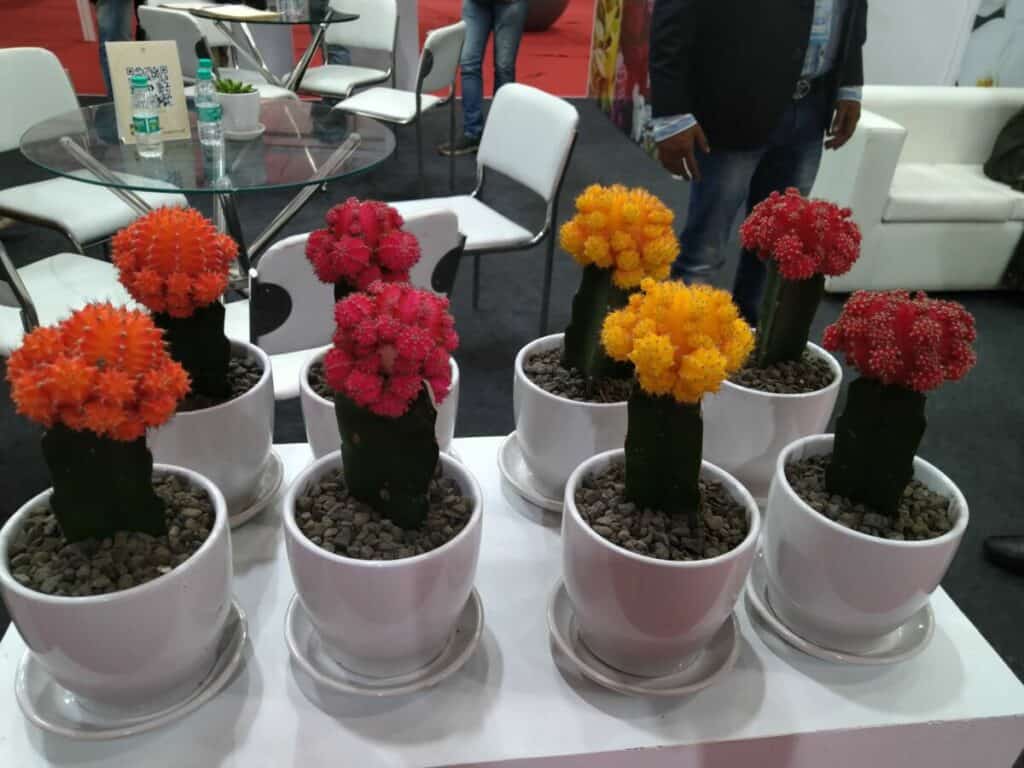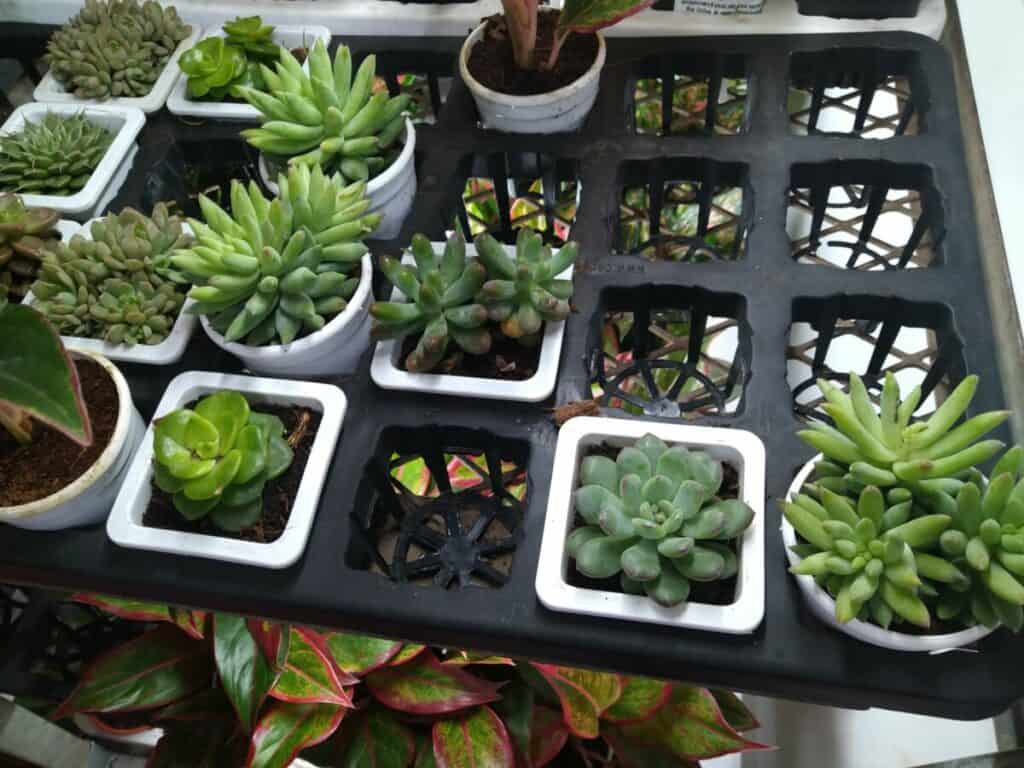Cacti and succulents have become increasingly popular in recent years. With that popularity comes more availability of unique gardening products like cactus soil. Cactus soil supports the distinct needs of plants that grow in arid environments.
You can use cactus soil for herbs that prefer to grow in dry soil. The cactus soil has a loose texture that helps it to drain the excess water fast. Herbs like sage, oregano, thyme, and rosemary prefer the soil to dry out before watering. These can grow well in such cactus soil.
While marketed for cacti and succulents, cactus soil works well for a wide variety of plants. That includes herbs. It’s perfectly fine to use cactus soil in your herb garden.
Cactus soil is a specialty potting mix. You can find it at most gardening centers and nursies. It contains all the good stuff plants need to thrive. But, the soil contains some extra constituents that can support the dry conditions cacti prefer.
Which Herbs Grow Well in Cactus Soil?
Not all herbs are going to take advantage of what cactus soil has to offer. Some plants prefer very moist growing environments. Those plants will still grow in cactus soil, but they may not reach their full potential.
The best types of herbs you can plant in cactus soil are ones that like dry conditions. Here are some herbs to try out.
Sage
Sage is a strong herb that’s native to Mediterranean regions. It’s a hardy little plant that seems to grow no matter what. The plant grows best in hardiness zones 5 through 9.
That said, it does prefer to have well-draining soil. It also likes plenty of sunlight.
Rosemary
Rosemary is another plant that comes from the Mediterranean. While it can grow in moist conditions, this herb performs best in soil with good drainage. Proper drainage and carefully planned waterings can improve flavor.
Thyme
A great drought-tolerant plant, thyme grows well in cactus soil. It needs adequate drainage to stay healthy.
The flavorful herb likes hot temperatures and plenty of sunlight. There are several different varieties of time out there. With cold-tolerant cultivars, you can grow this herb as far north as hardiness zone 2.
Bay
Great for soups and stews, Bay is a great herb for cactus soil. It will require more frequent waterings, as it prefers moist soil. But, it still needs good drainage to prevent root rot.
Oregano
This popular herb is a staple in many cultures and cuisines. It has flavorful leaves that have tons of vitamins, too.
The oregano plant does not do well with overwatering. It needs proper drainage. You should only water the plant when the soil is dry. As a result, cactus soil is a suitable growing medium.
Can Herbs Be Grown Along with Cactus?

Believe it or not, planting herbs and cacti together is very common.
Combining the two plants opens up a lot of possibilities in terms of decor and style. Not only that, but it helps you save space.
The reason they work well together comes down to the root structure. Cacti and succulents have shallow roots. In good soil, they can spread a bit for better anchorage. But, they are not nearly as widespread as other plants.
The same goes for a lot of the herbs I mentioned earlier. Herb roots vary based on the cultivar. But most are going to be between 3 and 12 inches deep. Shallow-rooted herbs like thyme and oregano can thrive in a small container with succulents.
The cactus soil will ensure that every plant is getting proper drainage and aeration, which is a big plus.

What Does Cactus Soil Contain?
Cactus soil is like any other potting soil you find on the market. It contains organic matter and basic minerals. The exact ingredients will vary from manufacturer to manufacturer.
But, you can expect to find things like peat, sand, bark, and perlite.
The thing that sets the soil apart from standard potting mixes is the ratio of the ingredients. Cactus soil has higher concentrations of minerals. About a third of the mix is sand or perlite. That’s significantly higher than the 20 percent of potting soil.
The higher mineral content gives cactus soil its distinct texture. The sand and perlite improve aeration and drainage to create a better growing environment for cacti and succulents.
You may also find some additives to promote better growth. Big-name brands usually add fertilizers to give your plants a kick of nutrients.
How to Make Your Own Cactus Soil Mix
Premixed cactus soil is readily available in most gardening stores. But, you can also make your own. All you need are a few basic ingredients that improve drainage and nutrient content.
There are a couple of ways to go about this. Here are two different recipes you can try out based on your needs.
Simple Cactus Soil Recipe
This is a quick and easy cactus mix that only uses two ingredients. All you need are:
- 1 part organic matter
- 2 parts mineral material
You have several options for your organic matter and mineral material.
The organic matter is what’s going to supply your plants with nutrients. Most commercial mixes contain peat moss. But, you can use coconut coir, compost, or even organic potting soil.
The mineral material is what’s going to give the soil its texture and drainage capabilities. You can utilize coarse sand or perlite.
Mix your two ingredients together is a 1:2 ratio. When fully incorporated, the soil should be sturdy. When moist, it should crumble in your hands.
Complex Cactus Soil Recipe
Here’s a more detailed recipe if you want more control over what’s in the mix. It’s best for large batches, as it contains several ingredients.
You’re going to need:
- 1 part coarse sand
- 4 parts organic matter
- 5 parts perlite
- A pinch of rock dust
With your organic matter, you can use the same options as those from the simple recipe. Organic compost is going to provide you with the most nutrients. But, peat moss or standard potting soil works well, too.
The rock dust will also benefit the soil quality. It infuses the mix with important minerals.
Like before, mix the constituents together until you have a well-draining soil that will support your herbs.
Benefits of Using Cactus Soil
Cactus soil offers a lot of benefits for herbs and other plants. The unique potting mix creates a rich growing environment that many herbs can take advantage of. Here are just some notable benefits of cactus soil.
Cactus Soil is Coarse
Cactus soil is significantly coarser than standard potting mixes. Most bagged soil products contain about 20 percent sand. That’s great for your average moisture-loving plant. But those than need better drainage will prefer something a bit coarser.
Commercial cactus soil mixes usually contain 33 percent or more sand. The coarse texture naturally aerates the growing medium. Your herbs need loose soil for even moisture distribution and airflow. Furthermore, it prevents compaction and lets the plant roots easily spread.
Cactus Soil is Rich
Compared to standard loam, cactus soil has a lot more nutrition. That’s because it contains more peat moss.
Peat is a great source for all the vital nutrients and minerals that plants need to flourish. It contains calcium, phosphorus, magnesium, potassium, and more.
Cactus soil isn’t as nutrient-rich as peat alone. However, the mix is great for starting seeds and giving your herbs a boost of energy to reach their full potential.
Cactus Soil Drains Well
As mentioned earlier, cactus soil drains very well. The soil doesn’t hold onto moisture as other mixes do. As a result, you can avoid waterlogging issues.
Your herbs will benefit greatly from better drainage. It reduces the risk of root rot, fungal issues, and pest problems.
What Makes Cactus Soil Different?
The biggest difference with cactus soil comes down to how it holds water.
You see, cacti and succulents originally come from dry environments where water is scarce. As a result, these plants hold onto moisture in their pads, stems, and trunks. That’s why the plants have such thick leaves. Cacti can then use that stored water for energy in times of drought.
The problem with traditional potting mixes and soils is that they can hold onto too much water for the plant. Excess moisture will make leaves turn brown and wrinkly. Not only that, but the root system can start to rot.
A good cactus soil has better drainage and a looser texture to help the plant’s root system thrive.
All of those characteristics are great for many herbs. Herbs need superior drainage, too. They don’t take well to standing water. Plus, the nutritional makeup of cactus soil can help your herbs reach their full potential.

Fact Checked, Written, and Published by Kevin Rodrigues
Kevin is the founder of Gardening Mentor, a website that aims to teach people to grow their own food in a limited space. As a self-taught gardener, Kevin has spent several years growing plants and creating gardening content on the website. He is certified in Home Horticulture and Organic Gardening from Oregon State University. He has a Post Graduate Diploma in Horticulture and Landscape Gardening from Mumbai University.
Read more
